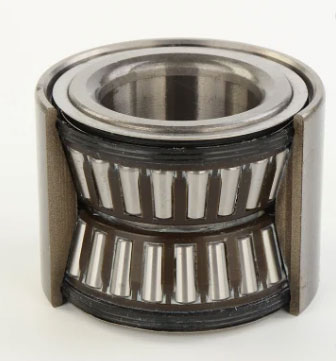Home / News / Understanding Cylindrical Roller Bearings: Design, Types, and Applications
Understanding Cylindrical Roller Bearings: Design, Types, and Applications
Cylindrical roller bearings are essential components in many industrial applications. They are designed to support radial loads and operate at high speeds with low friction. Cylindrical roller bearings consist of cylindrical rollers arranged in parallel and held in place by a cage. These bearings come in various designs and types, depending on the intended application.
Design and Construction
Cylindrical roller bearings have several components that work together to provide support and stability. The inner and outer rings are designed to fit snugly with the cylindrical rollers. The rollers are held in place by a cage made of brass, steel, or synthetic materials. The cage ensures that the rollers are evenly spaced and prevent them from touching each other.
Types of Cylindrical Roller Bearings
There are different types of cylindrical roller bearings, each with unique features that make them suitable for specific applications. One type is the single-row cylindrical roller bearing, which consists of one set of rollers, one inner ring, and one outer ring. Double-row cylindrical roller bearings have two sets of rollers, two inner rings, and one outer ring. These bearings can handle heavier radial loads than single-row bearings.
Other types include full complement cylindrical roller bearings, which have no cage, allowing the maximum number of rollers in the space available. These bearings can handle heavy radial loads, but they have limited speed capabilities. Another type is the multi-row cylindrical roller bearing, which has multiple sets of rollers and rings, allowing it to handle extremely heavy radial loads.

Applications of Cylindrical Roller Bearings
Cylindrical roller bearings are used in various industrial applications, including construction equipment, mining machinery, and automotive components. They are also used in power generation equipment, rolling mills, and gearboxes. These bearings are designed to operate in extreme conditions, such as high temperatures and heavy loads.
One application of cylindrical roller bearings is in wind turbines. The bearings support the weight of the rotor and allow it to rotate smoothly. They are also used in the main shaft of the turbine, where they support the loads generated by wind forces. Cylindrical roller bearings are also used in railroad equipment, where they support heavy loads and allow the wheels to turn smoothly.
Cylindrical roller bearings are essential components in many industrial applications. They provide support and stability to rotating components, allowing them to operate at high speeds and handle heavy loads. Understanding the different types and designs of cylindrical roller bearings can help in selecting the right bearing for a specific application. With proper maintenance, these bearings can provide reliable performance and long service life.
- Previous: An Overview of Thin Section Bearings: Advantages, Types, and Applications
- Next: Exploring the Versatility of Tapered Roller Bearings











